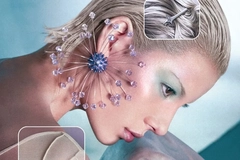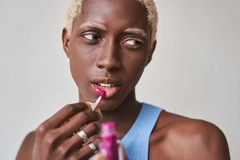EU SCCS issues opinion on unsafe salicylic acid concentrations for children’s products

The EU Scientific Committee on Consumer Safety (SCCS) has deemed salicylic acid unsafe for use as a preservative at a concentration of 0.5% in all cosmetic products for children ages three to ten.
The decision was published following pushback and data from the personal care industry defending the use of the chemical in products used by children. Salicylic acid is a chemical exfoliant known for its acne-fighting properties but can also act as a preservative.
Despite the data provided, SCCS still found salicylic acid unsafe for children’s cosmetics in many instances. The announcement is part of the SCCS’s safety assessments on substances that may have endocrine-disrupting properties.
Endocrine disruptors mimic or interfere with the body’s hormonal system. These interferences can cause developmental malformations, problems with reproduction, increased cancer risk and disturbances in the immune and nervous system function.
SCCS on salicylic acid safety
The SCCS says using salicylic acid for purposes other than inhibiting the development of microorganisms is not safe for children at up to 3% concentrations for rinse-off hair products (shampoo, conditioner).
 The SCCS issues a warning against kids under 10 using hair care that contains salicylic acid.The scientific committee maintained the same sentiment for up to 2% concentrations for selected other topical products used by children (face moisturizer, hand cream, liquid soap and shower gel) and up to 0.5% for body lotion.
The SCCS issues a warning against kids under 10 using hair care that contains salicylic acid.The scientific committee maintained the same sentiment for up to 2% concentrations for selected other topical products used by children (face moisturizer, hand cream, liquid soap and shower gel) and up to 0.5% for body lotion.
Salicylic acid was decidedly safe in single dermal and oral product categories, except for body lotion, when not used as a preservative.
However, also excluding body lotion, salicylic acid is safe as a preservative in cosmetic products up to a maximum concentration of 0.5 % in single dermal and oral product categories.
The SCCS notes that its opinion on the ingredient is not applicable to sprayable products (including mouth spray) that may lead to exposure of the user’s lungs by inhalation. It also notes that salicylic acid is an eye irritant with the potential to cause serious damage to the eye.
The committee recommends that reducing the concentration, for example to 0.1%, would make it safer for dermal products and toothpaste.
The SCCS’s conclusions refer only to salicylic acid as a cosmetic ingredient, not other salicylates or salicylic acid salts.
Sephora kids surge
Claire’s recently launched C by Claire’s, a collection of fragrances and body care products specifically tailored for Gen Zalpha — tweens and young teens straddling Generation Z and Generation Alpha.
Last year, social media exploded with complaints and concerns about “Sephora kids” after teens and tweens were delving into e Younger generations are more into skin care and cosmetics than previous generations.xpensive adult skin care and becoming enamored with anti-aging products. “Sephora kids” refers to Gen Zalpha adopting complex skin care routines unsuited for their young skin.
Younger generations are more into skin care and cosmetics than previous generations.xpensive adult skin care and becoming enamored with anti-aging products. “Sephora kids” refers to Gen Zalpha adopting complex skin care routines unsuited for their young skin.
Dermatologists expressed worries over skin care use by children as it could provoke allergies or eczema. The British Association for Dermatologists warned that kids using skin products with anti-aging ingredients or other potent actives could leave them with irreversible skin problems.
A popular skin care brand among Gen Zalpha, Drunk Elephant, faced criticism after voluntarily recalling specific batches of its skin care products after accidentally switching surfactants and preservatives and finding two unlisted ingredients in the formulations.
Drunk Elephant’s bright packaging and influencer endorsements have made it a favorite among younger generations despite concerns about the safety of potent active ingredients like retinoids and exfoliating acids. This trend highlights beauty brands’ responsibility to market their products appropriately while still engaging younger audiences.












